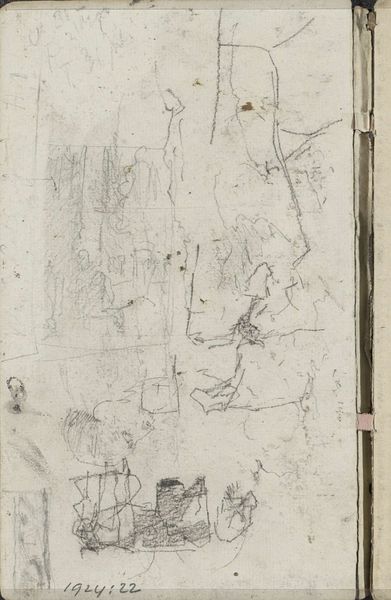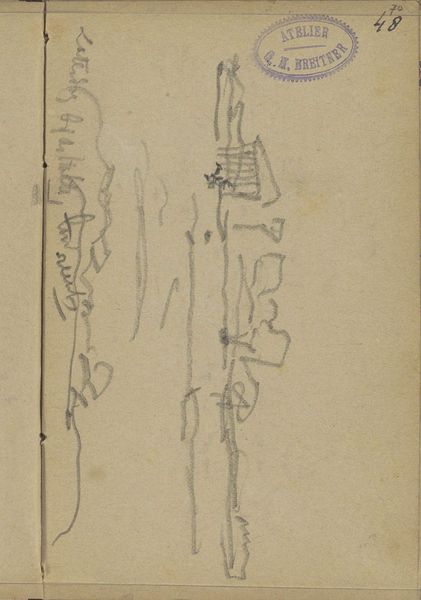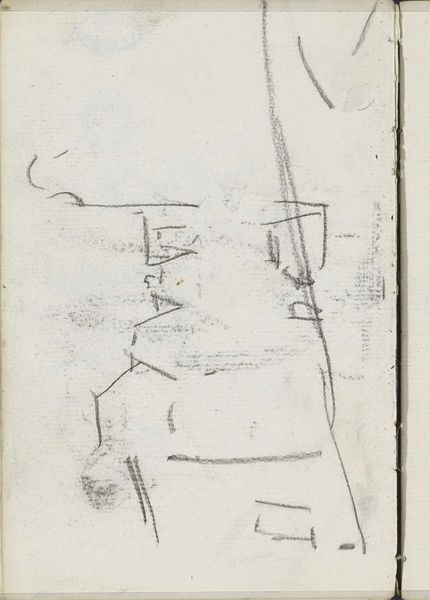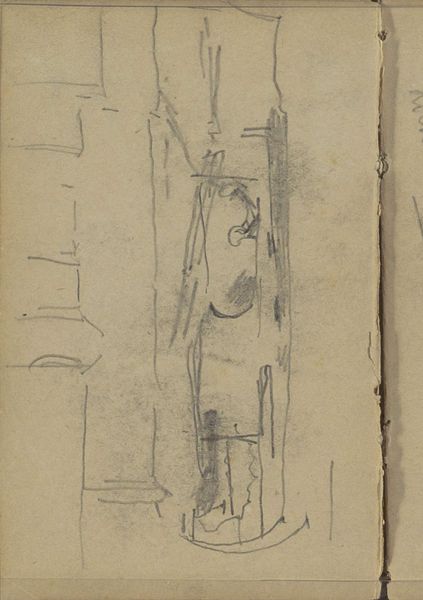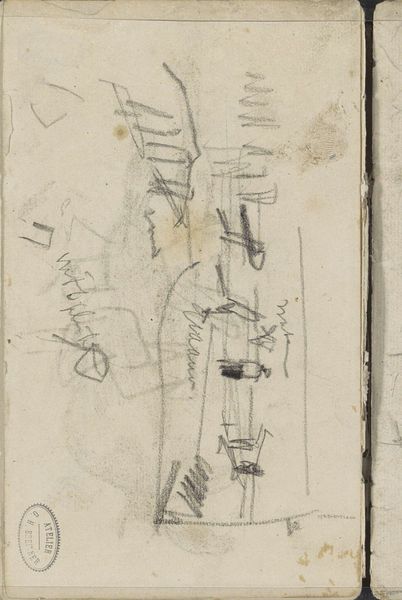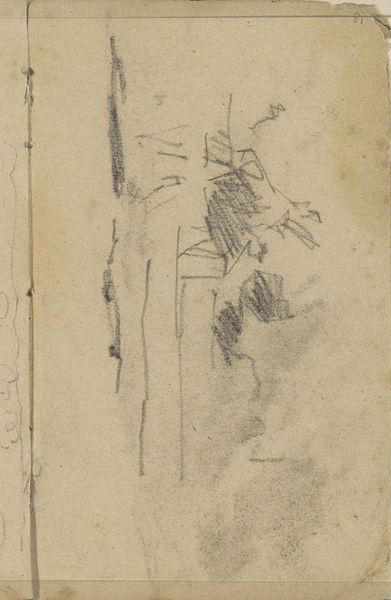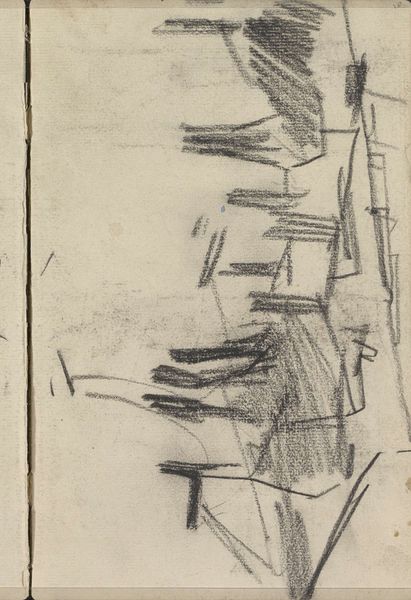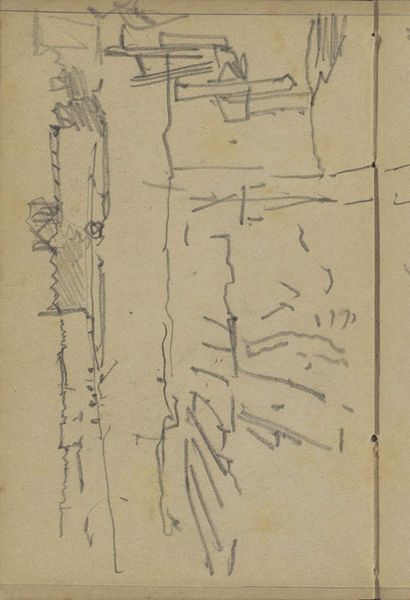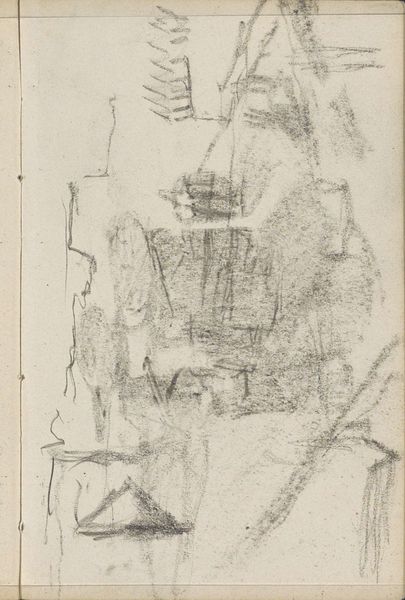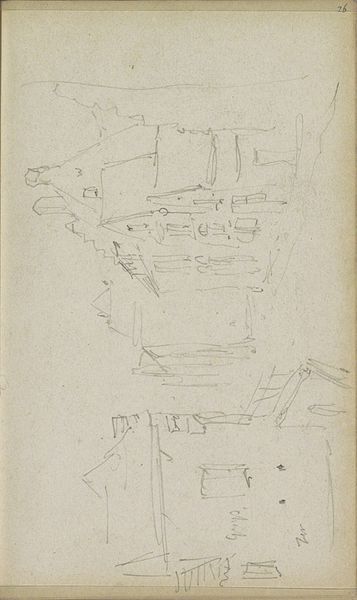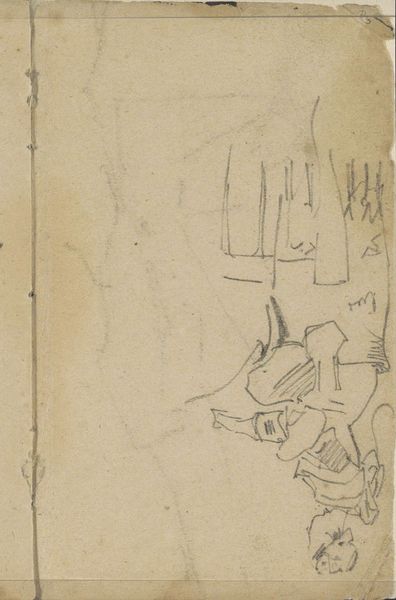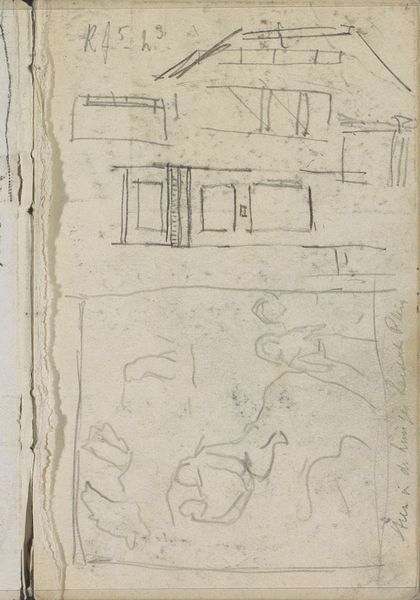
Copyright: Rijks Museum: Open Domain
Curator: Welcome to the Rijksmuseum. Here we have George Hendrik Breitner's sketch, "Gezicht op de Oude Hoogstraat te Amsterdam," likely created between 1900 and 1923. It’s a pencil drawing on paper. Editor: It strikes me as ghostly, incomplete. The street is suggested more than depicted, with a frantic energy despite its light touch. A fleeting moment captured, wouldn't you agree? Curator: I'd say that energy comes from Breitner's engagement with the immediacy of urban life. Look at the visible layering, the revisions, it's a record of process, isn't it? This wasn't meant for display, this was raw, direct material. We're given insight into how Breitner worked. Editor: Exactly! And these fleeting impressions resonate with familiar images: pillars become standing figures and window displays resemble stacked icons. What would these semi-abstract signs signify to early 20th century Amsterdam residents? Curator: Considering the material aspect though, pencil sketches like this were a relatively inexpensive and portable means of art production. He could go anywhere and quickly record what he saw, without the constraints of larger formats or the drying time of paint. Editor: True, the accessibility of the medium is important. But also think of the cultural memory embedded here. Amsterdam’s urban environment carries symbolic weight. Doesn't this rapid depiction speak to themes of modern life, of urban flux and change? Curator: I think the rapid technique highlights the temporary nature of what we see. The built environment constantly evolving, with commerce and labor fundamentally reshaping experience in the city. This contrasts with historical painting’s emphasis on permanence. Editor: Perhaps Breitner's marks invite the viewer to co-create the scene, infusing their understanding of the urban landscape with historical and cultural resonance. Curator: Possibly. This sketch underlines that art doesn’t just appear out of nowhere, it involves resources, labor, and specific social conditions of creation and consumption. Editor: I see your point. Still, the way those faint pencil lines conjure the mood of a bustling city block speaks volumes, connecting us to shared experiences across time through the potent language of symbolic association. Curator: So, we've traced its lines, scrutinized the conditions of its creation and now hopefully gained a new appreciation of Breitner’s Amsterdam. Editor: A shared cityscape. Fascinating.
Comments
No comments
Be the first to comment and join the conversation on the ultimate creative platform.

